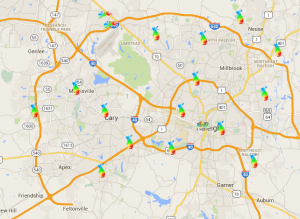Interesting take on what motivates a software engineer. This is three years old but surprisingly relevant.
Most people who have been assigned the unfortunate task of managing programmers have no idea how to motivate them. They believe that the small perks (such as foosball tables) and bonuses that work in more relaxed settings will compensate for more severe hindrances like distracting work environments, low autonomy, poor tools, unreasonable deadlines, and pointless projects. They’re wrong. However, this is one of the most important things to get right, for two reasons. The first is that programmer output is multiplicative of a number of factors– fit with tools and project, skill and experience, talent, group cohesion, and motivation. Each of these can have a major effect (plus or minus a factor of 2 at least) on impact, and engineer motivation is one that a manager can actually influence. The second is that measuring individual performance among software engineers is very hard. I would say that it’s almost impossible and in practical terms, economically infeasible. Why do I call infeasible rather than merely difficult? That’s because the only people who can reliably measure individual performance in software are so good that it’s almost never worth their time to have them doing that kind of work. If the best engineers have time to spend with their juniors, it’s more worthwhile to have them mentoring the others (which means their interests will align with the employees rather than the company trying to perform such measurement) than measuring them, the latter being a task they will resent having assigned to them.



